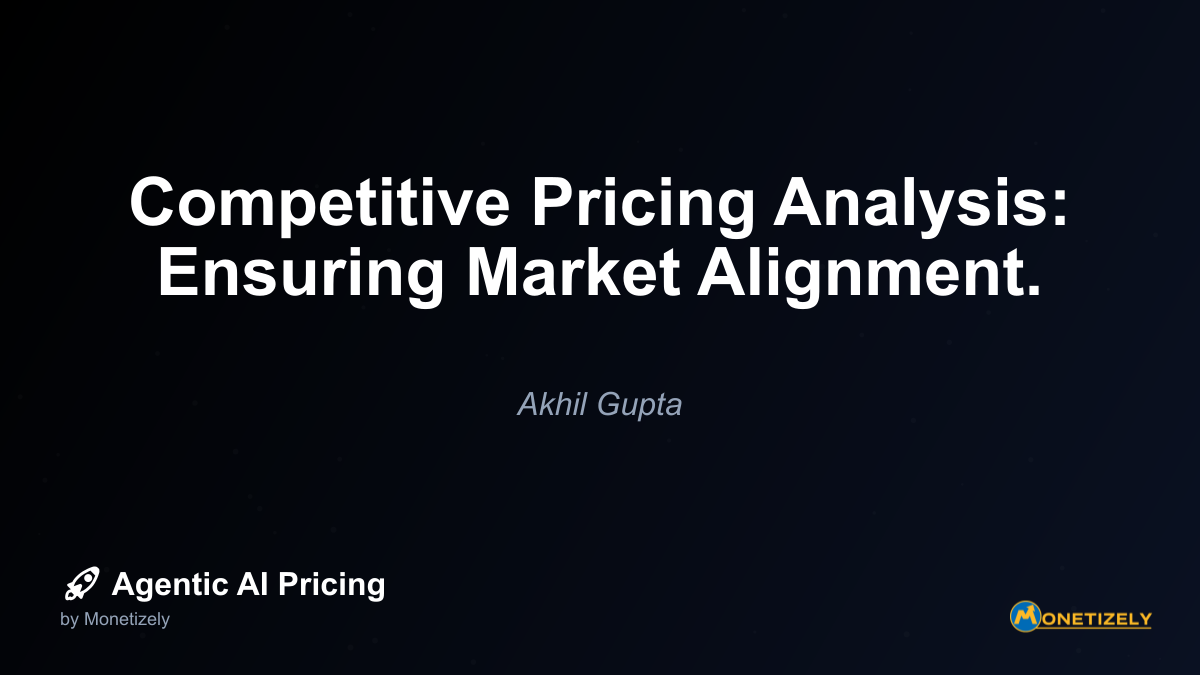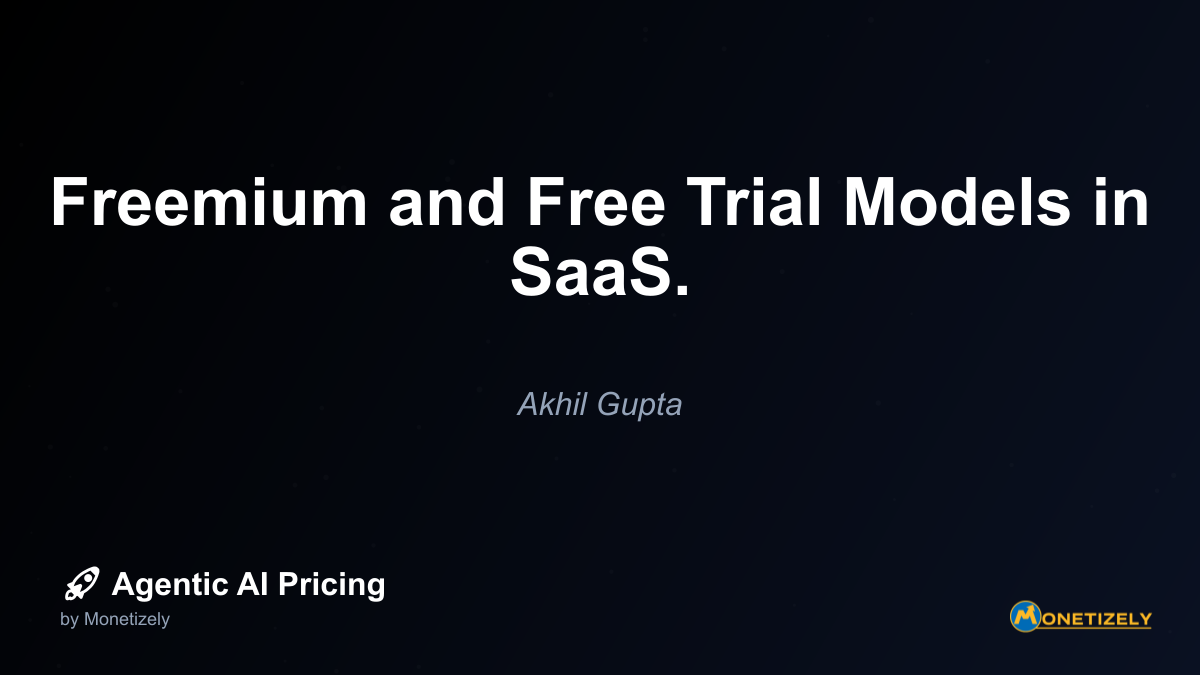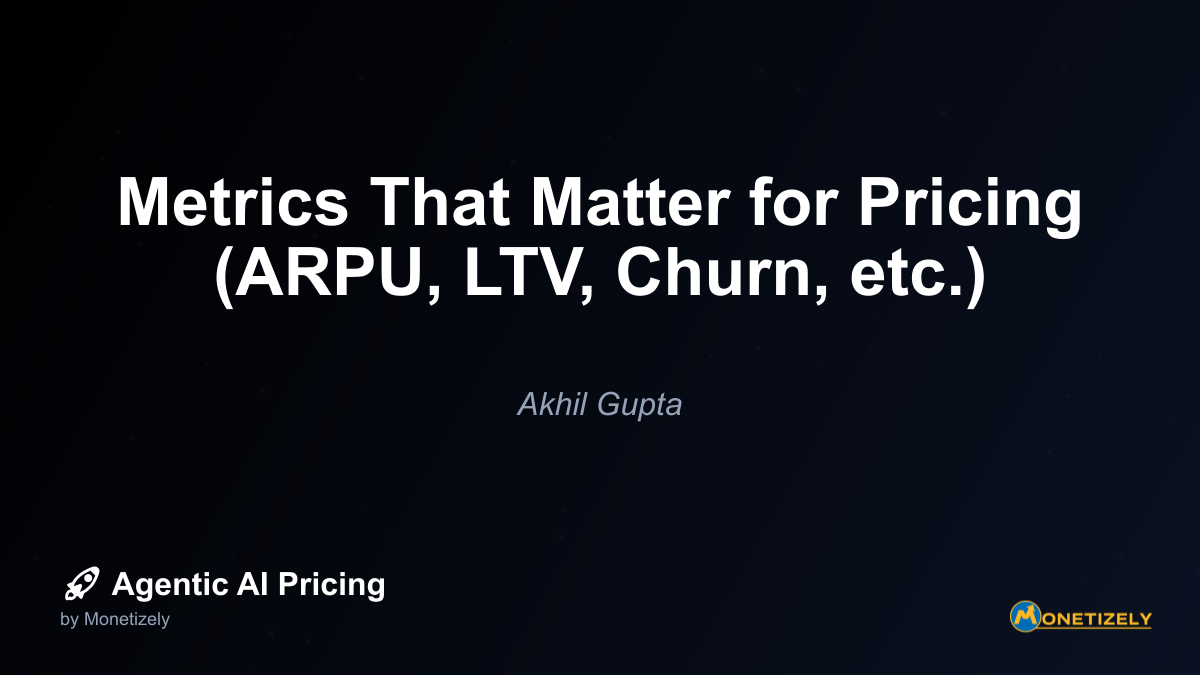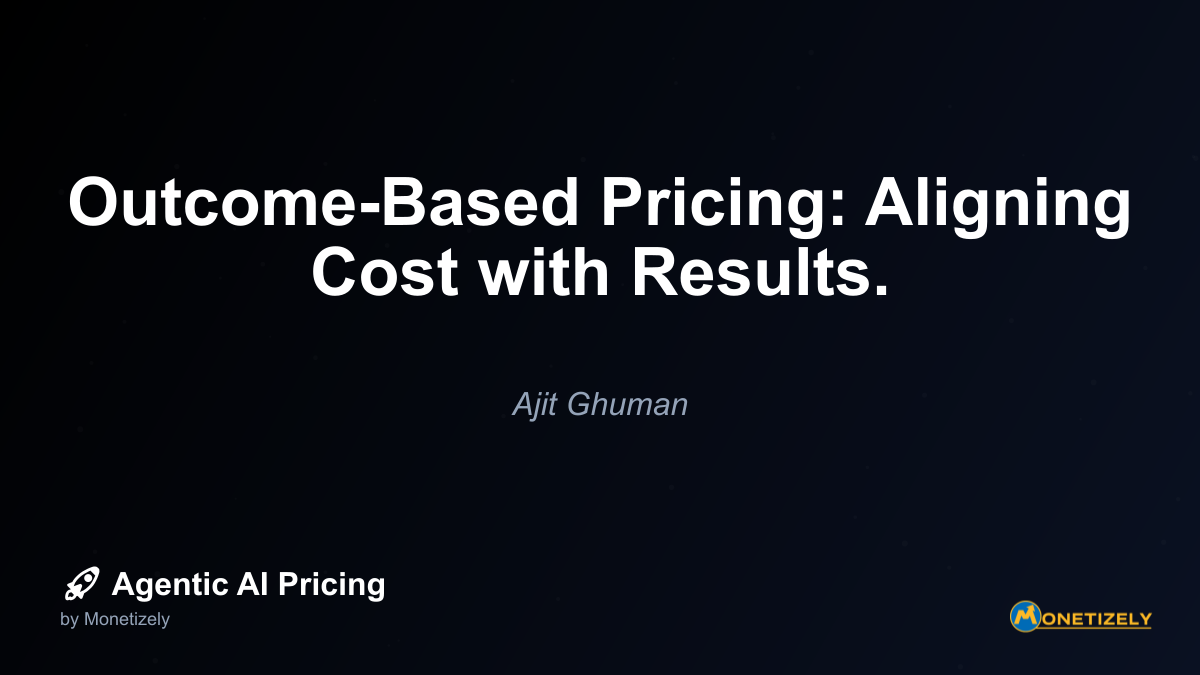· Akhil Gupta · Pricing Fundamentals · 5 min read
Common SaaS Pricing Mistakes to Avoid.
AI and SaaS Pricing Masterclass
Learn the art of strategic pricing directly from industry experts. Our comprehensive course provides frameworks and methodologies for optimizing your pricing strategy in the evolving AI landscape. Earn a professional certification that can be imported directly to your LinkedIn profile.
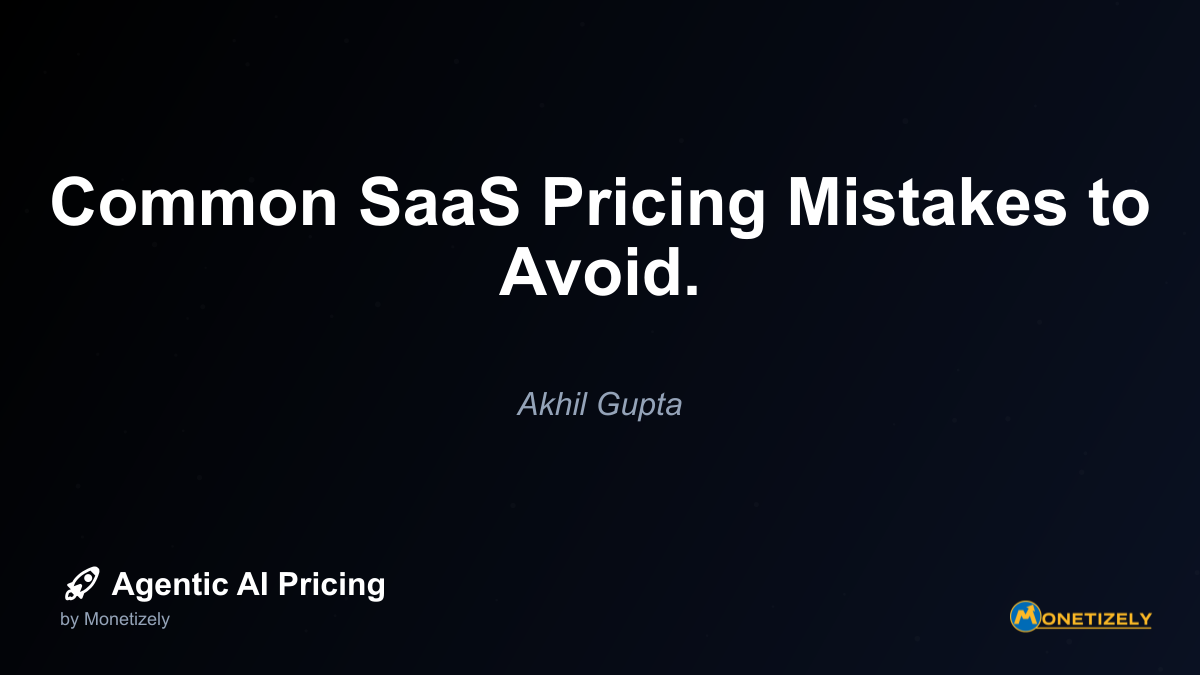
Neglecting Key Pricing Metrics and KPIs
A serious but often overlooked mistake is failing to track the right pricing metrics and KPIs. Without proper measurement, pricing decisions become guesswork rather than data-driven strategy.
The Complete Guide to SaaS Pricing Metrics and KPIs outlines essential metrics that every SaaS company should monitor, including:
Average Revenue Per User (ARPU): Tracks the average revenue generated per customer, helping identify pricing optimization opportunities.
Customer Acquisition Cost (CAC): Measures the total cost to acquire a new customer, which must be balanced against pricing and lifetime value.
Customer Lifetime Value (CLV): Projects the total revenue a customer will generate over their relationship with your company.
CLV:CAC Ratio: Compares customer lifetime value to acquisition cost, with healthy SaaS businesses maintaining a ratio of 3:1 or higher.
Pricing Efficiency: Measures how effectively your pricing captures the value customers receive.
Churn Rate: Tracks customer departures, which can signal pricing misalignment if too high.
Expansion Revenue: Measures additional revenue from existing customers through upsells and cross-sells.
Without actively tracking these metrics, companies make uninformed pricing decisions that can severely impact business health. Implement a dashboard that monitors these KPIs and review them regularly when making pricing decisions.
Competitor-Focused Pricing
Many SaaS companies fall into the trap of basing their pricing primarily on competitors’ models. While competitive awareness is important, slavishly matching or undercutting competitors ignores your unique value proposition and can lead to:
- Commoditization of your offering
- Race-to-the-bottom pricing wars
- Failure to capture your product’s unique value
- Misalignment with your specific cost structure and business model
Instead of competitor-focused pricing, adopt a balanced approach that:
- Acknowledges competitive pricing as one input among many
- Emphasizes your unique value differentiators
- Aligns pricing with your specific target segments
- Reflects your product’s unique features and benefits
Companies with the most successful pricing strategies understand their competitive landscape but ultimately price based on the unique value they deliver to customers.
Misaligned Value Metrics
Choosing the wrong value metric—the unit by which you charge customers—is a fundamental pricing mistake. Common value metrics include:
- Per user/seat
- Per transaction
- By usage volume
- Based on features
- By outcomes achieved
The problem arises when your chosen value metric doesn’t align with how customers derive value from your product. For example, charging per user for a communication platform makes sense because value increases with more users. However, the same metric for a data processing tool might penalize adoption if the number of users doesn’t correlate with value received.
An effective value metric should:
- Scale with value: As customers derive more value, they pay more
- Align with customer success: When customers succeed with your product, your revenue grows
- Be predictable: Customers should be able to forecast their costs
- Feel fair: The pricing model should intuitively make sense to customers
Slack’s per-active-user model exemplifies this alignment—customers pay based on actual usage rather than seats purchased, creating a fair value exchange that scales appropriately.
Inadequate Price Testing
Many SaaS companies implement pricing changes without proper testing, leading to unexpected customer reactions and potential revenue losses. Effective price testing involves:
- Segmented testing: Test new pricing with specific customer segments before full rollout
- A/B testing: Present different pricing options to different prospects to gauge response
- Cohort analysis: Track how different customer cohorts respond to pricing changes
- Customer interviews: Gather qualitative feedback on pricing perception
Testing methodologies might include:
- Van Westendorp Price Sensitivity Meter: Surveys that identify optimal price points
- Gabor-Granger method: Sequential price testing to determine willingness to pay
- Conjoint analysis: Measures how customers value different product attributes
Companies that implement systematic price testing typically see 3-5% revenue improvements from each pricing optimization cycle.
Communication Failures During Price Changes
Even well-conceived pricing changes can fail due to poor communication. Common communication mistakes include:
- Surprising customers with unexpected price increases
- Failing to articulate the added value justifying price changes
- Using technical or confusing language in pricing communications
- Not providing adequate notice before implementing changes
- Neglecting to train customer-facing teams on how to discuss pricing
Effective price change communication should:
- Provide advance notice appropriate to your sales cycle length
- Clearly articulate the additional value customers will receive
- Offer transition options for price-sensitive customers
- Equip your team with talking points to address customer concerns
- Consider timing price increases with significant feature releases
When HubSpot implemented a major pricing restructure, they provided six months’ notice, created detailed comparison materials, and trained their customer success teams extensively—resulting in minimal churn despite significant changes.
Ignoring the Full Customer Journey in Pricing
Many companies focus solely on acquisition pricing without considering the entire customer lifecycle. This myopic approach ignores opportunities to optimize revenue throughout the customer journey:
- Acquisition: Initial pricing to convert prospects
- Adoption: Pricing structures that encourage full product utilization
- Expansion: Upsell and cross-sell opportunities as customer needs grow
- Renewal: Pricing strategies that maximize retention and minimize churn
A lifecycle approach to pricing might include:
- Introductory offers that convert to standard pricing after proven value
- Expansion revenue opportunities through tiered usage pricing
- Loyalty discounts for long-term commitments
- Bundle pricing for complementary products
Companies with sophisticated pricing strategies consider how pricing decisions impact each stage of the customer journey and optimize accordingly.
Conclusion: Building a Strategic Pricing Approach
Avoiding these common SaaS pricing mistakes requires a strategic, intentional approach to pricing. Rather than treating pricing as a one-time decision or reactive adjustment, successful companies view pricing as an ongoing strategic capability that requires:
- Regular review and optimization: Scheduling quarterly and annual pricing assessments
- Cross-functional input: Involving product, sales, marketing, and finance in pricing decisions
- Customer-centric approach: Basing decisions on customer value perception and willingness to pay
- Data-driven methodology: Using metrics and testing to validate pricing hypotheses
- Clear communication: Transparently explaining pricing decisions to customers and internal teams
By avoiding these common pitfalls and implementing a strategic approach to pricing, SaaS companies can significantly improve their revenue, profitability, and customer satisfaction. The most successful companies view pricing not as a necessary evil but as a critical strategic lever that directly impacts business success.
Remember that pricing is not merely about setting numbers—it’s about creating a value exchange that benefits both your customers and your business. When approached strategically, pricing becomes one of the most powerful tools in your SaaS growth arsenal.
Co-Founder & COO
Akhil is an Engineering leader with over 16+ years of experience in building, managing and scaling web-scale, high throughput enterprise applications and teams. He has worked with and led technology teams at FabAlley, BuildSupply and Healthians. He is a graduate from Delhi College of Engineering and UC Berkeley certified CTO.
Pricing Strategy Audit
Let our experts analyze your current pricing strategy and identify opportunities for improvement. Our data-driven assessment will help you unlock untapped revenue potential and optimize your AI pricing approach.

